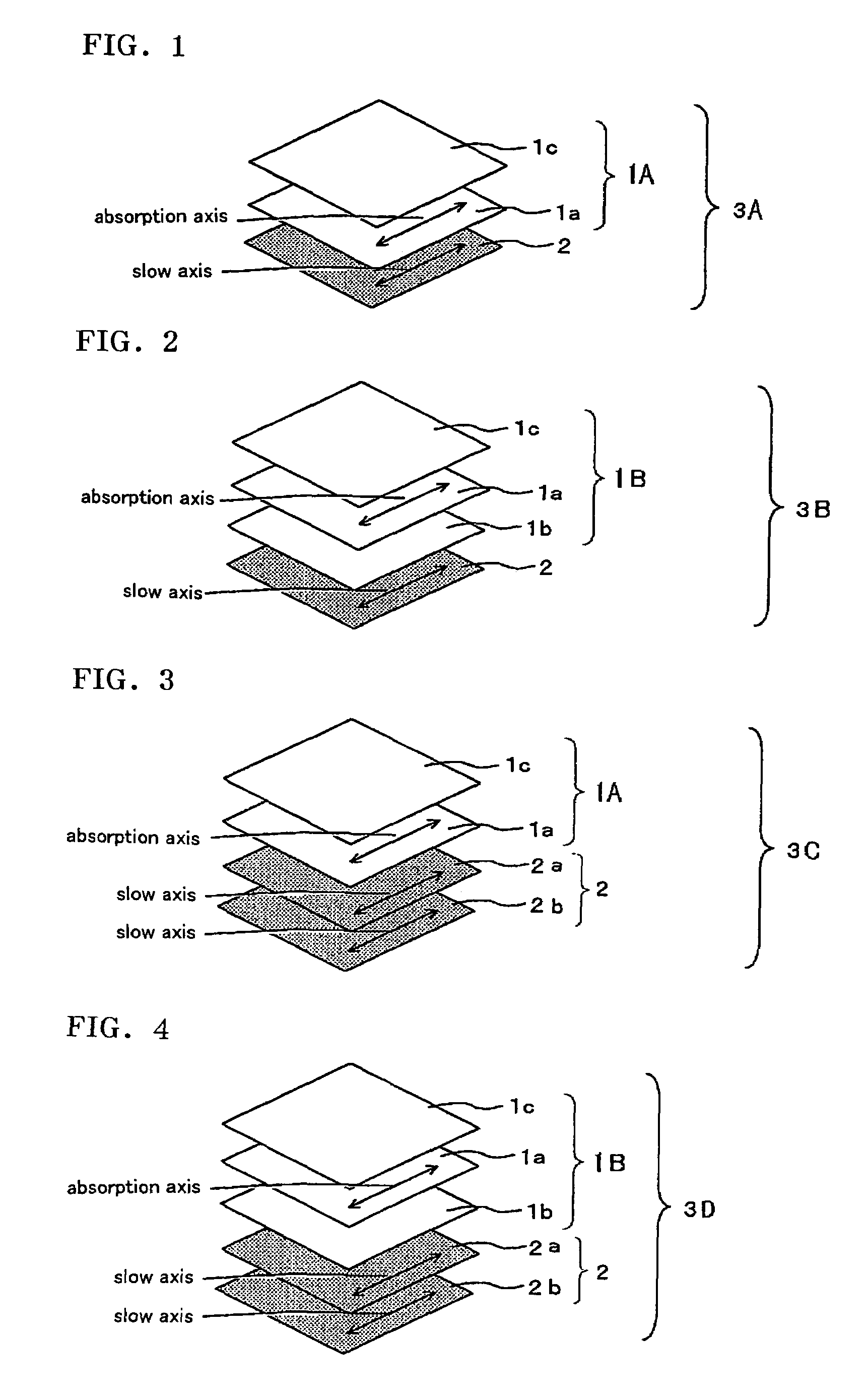Retardation film, process for producing the same, optical film, image display, liquid crystal panel and liquid crystal display
a retardation film and film technology, applied in the field of retardation films, can solve the problems of deteriorating display properties, uneven retardation value generation, and inability to obtain desired retardation value not only by stretching at a low stretching ratio, and achieve the effect of difficult to generate a shift or uneven retardation valu
- Summary
- Abstract
- Description
- Claims
- Application Information
AI Technical Summary
Benefits of technology
Problems solved by technology
Method used
Image
Examples
example 1
[0246]A shrinkable film (E) was applied on both sides of a polymer film (trade name “ZEONOR ZF14-100” manufactured by Nippon Zeon Co., Ltd.) having thickness of 100 μm containing a resin in which a ring opening polymer obtained by polymerizing a norbornene-based monomer had been hydrogenated, via an acrylic resin-based pressure-sensitive adhesive layer (thickness 15 μm). Thereafter, a film was retained at the machine direction with a roll stretching machine, and the film was stretched at 1.38 times in an air circulating constant temperature oven at 146° C.±1° C. Properties of the resulting retardation film are as shown in Table 2. A glass transition temperature (Tg) of the polymer film containing a resin in which a ring opening polymer obtained by polymerizing a norbornene-based monomer had been hydrogenated was 136° C., a retardation value in film plane before stretching was 5.0 nm, and a retardation value in the thickness direction was 12.0 nm.
[0247]As the acrylic resin-based pres...
example 2
[0248]According to the same manner as that of Example 1 except that a stretching temperature was changed from 146° C. to 140° C., and a stretching ratio was changed from 1.38 times to 1.08 times, a retardation film was prepared. Properties of the resulting retardation film are shown in Table 2.
example 3
[0249]According to the same manner as that of Example 1 except that a stretching temperature was changed from 146° C. to 140° C., and a stretching ratio was changed from 1.38 times to 1.09 times, a retardation film was prepared. Properties of the resulting retardation film are shown in Table 2.
PUM
| Property | Measurement | Unit |
|---|---|---|
| polymerization pressure | aaaaa | aaaaa |
| glass transition temperature | aaaaa | aaaaa |
| glass transition temperature | aaaaa | aaaaa |
Abstract
Description
Claims
Application Information
 Login to View More
Login to View More - R&D
- Intellectual Property
- Life Sciences
- Materials
- Tech Scout
- Unparalleled Data Quality
- Higher Quality Content
- 60% Fewer Hallucinations
Browse by: Latest US Patents, China's latest patents, Technical Efficacy Thesaurus, Application Domain, Technology Topic, Popular Technical Reports.
© 2025 PatSnap. All rights reserved.Legal|Privacy policy|Modern Slavery Act Transparency Statement|Sitemap|About US| Contact US: help@patsnap.com



